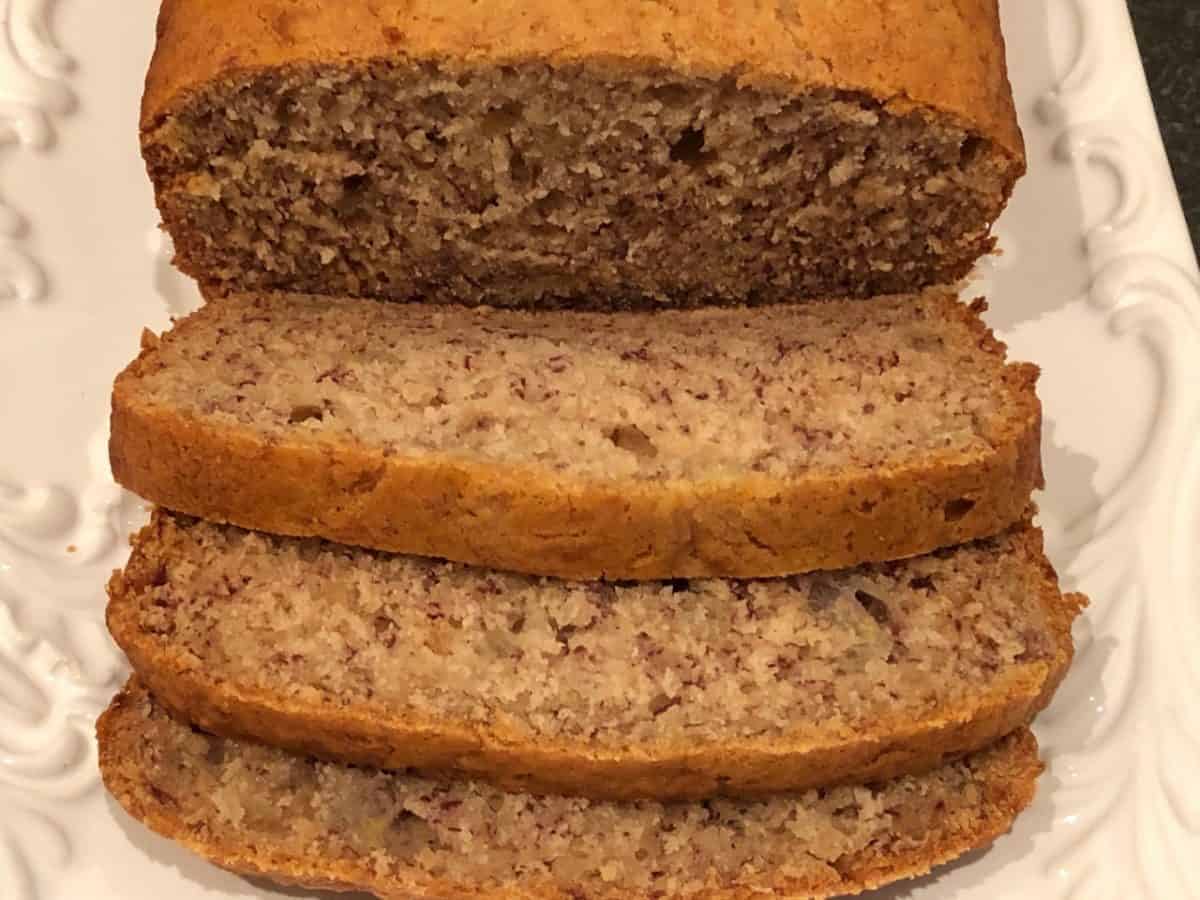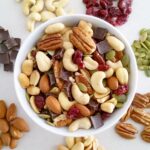Craving cake but out of eggs? Don’t despair! This comprehensive guide unveils a world of delicious possibilities, proving that eggless baking and cooking isn’t just possible, it’s surprisingly easy and incredibly flavorful. We’ll explore a variety of simple substitutes, from applesauce to flaxseed meal, revealing their unique properties and how they perfectly mimic the functions of eggs in both sweet and savory dishes. Prepare to discover a wealth of recipes and techniques that will expand your culinary horizons and empower you to create amazing meals, even without relying on eggs.
From fluffy eggless cakes to surprisingly realistic frittatas, we’ll delve into the science behind egg substitutes, showing you exactly how they work their magic. We’ll provide step-by-step recipes, helpful troubleshooting tips, and stunning visuals to guide you through the process. Whether you’re a seasoned baker or a kitchen novice, get ready to unlock a whole new level of culinary creativity and confidently conquer egg-free cooking.
Savory Dishes
Eggless cooking opens a world of culinary creativity, allowing for unique flavor combinations and textures in savory dishes. While eggs contribute binding and richness, many alternatives effectively mimic their function, leading to delicious and satisfying meals. This section explores five egg-free savory recipes and demonstrates the creation of a visually stunning eggless frittata.
Egg-Free Savory Recipes
Five distinct egg-free savory recipes showcase the versatility of egg substitutes in creating flavorful and satisfying meals. Each recipe utilizes readily available ingredients and simple techniques to achieve delicious results.
- Creamy Spinach and Artichoke Quiche (using silken tofu): Silken tofu, blended until smooth, acts as a creamy base, replacing the eggs. The filling bursts with the vibrant green of spinach, the heartiness of artichoke hearts, and the sharpness of Parmesan cheese. A flaky, store-bought crust provides a satisfying crunch.
- Mediterranean Chickpea and Vegetable Frittata (using chickpea flour): Chickpea flour, blended with water and spices, creates a light and slightly textured base for this vibrant frittata. Sun-dried tomatoes, Kalamata olives, and feta cheese add a burst of Mediterranean flavor. Roasted vegetables such as zucchini and bell peppers provide sweetness and color.
- Mushroom and Gruyere Tart (using potato starch): A mixture of potato starch, nutritional yeast, and plant-based milk creates a binding agent for this earthy tart. Sautéed mushrooms and nutty Gruyere cheese form a luxurious filling. A buttery, homemade crust complements the savory flavors.
- Spicy Black Bean and Corn Omelet (using flaxseed meal): Flaxseed meal, mixed with water to form a “flax egg,” binds the ingredients in this vibrant and flavorful omelet. Black beans, corn, bell peppers, and a touch of chili powder create a spicy and satisfying filling. The texture is slightly denser than a traditional egg omelet, but equally satisfying.
- Roasted Vegetable and Goat Cheese Tart (using aquafaba): Aquafaba, the liquid from canned chickpeas, creates a surprisingly airy and light base for this elegant tart. Roasted vegetables like butternut squash, Brussels sprouts, and carrots provide sweetness and depth of flavor, complemented by tangy goat cheese.
Creating a Visually Appealing Eggless Frittata
This recipe details the creation of a visually appealing eggless frittata using a layering technique to enhance its aesthetic appeal. The vibrant colors and textures of the vegetables create a captivating presentation.
The base of this frittata is made with chickpea flour, blended with water, nutritional yeast for a cheesy flavor, and a touch of turmeric for a sunny yellow hue. This mixture is poured into an oven-safe skillet. A layer of sautéed spinach, vibrant green and slightly wilted, is spread evenly over the base. Next, a layer of thinly sliced red bell peppers, adding a beautiful contrast in color and texture, is arranged artistically. Finally, crumbled feta cheese, its creamy white contrasting beautifully against the greens and reds, is scattered generously over the top. The frittata is baked until golden brown and set, revealing a layered masterpiece with a captivating visual appeal. The final product is a colorful, layered disc, showcasing the contrasting hues of the ingredients. The spinach provides a deep green, the red peppers a vibrant red, and the feta cheese a creamy white, all set against the golden-yellow base.
Texture and Flavor Comparison: Egg-Based vs. Egg-Free Frittata
A comparison of egg-based and egg-free frittatas, specifically focusing on the chickpea flour version, reveals subtle differences in texture and flavor. The egg-based frittata possesses a lighter, fluffier texture due to the air incorporated during whisking. The flavor is distinctly eggy, with a richness that is characteristic of eggs. The egg-free version, using chickpea flour, has a slightly denser, more substantial texture. While it lacks the airy lightness of the egg-based version, it offers a unique, slightly nutty flavor imparted by the chickpea flour. The nutritional yeast adds a savory, cheesy note that complements the vegetables, creating a satisfying and flavorful experience despite the absence of eggs. Both versions offer delicious results, but cater to different textural preferences.
Understanding Egg Functionality in Recipes

Eggs are culinary workhorses, contributing significantly to the texture, structure, and overall success of countless dishes. Their multifaceted role stems from their unique composition: a blend of protein, water, and fat, all held within a surprisingly robust structure. Understanding how eggs function in recipes is key to successfully substituting them. This knowledge allows for informed choices when adapting recipes for dietary restrictions or simply exploring alternative ingredients.
Eggs perform several crucial functions in baking and cooking. Their contributions are often subtle but undeniably impactful, affecting everything from the rise of a cake to the creaminess of a custard.
Egg Functionality: Binding, Leavening, Emulsifying, and Moistening
The versatility of eggs arises from their ability to bind ingredients, leaven baked goods, emulsify fats and liquids, and add moisture and richness. Each of these functions is crucial in different recipe types, and successfully substituting eggs requires careful consideration of how each substitute will replicate these roles.
- Binding: Egg proteins, particularly albumin and globulin, coagulate when heated, creating a cohesive matrix that holds ingredients together. This is essential in dishes like meatballs, frittatas, and many baked goods. Imagine a meatloaf—the eggs act as the glue, holding the meat, breadcrumbs, and other ingredients together.
- Leavening: Egg whites, when whipped, incorporate air, creating a light and airy texture. This leavening effect is crucial in meringues, soufflés, and angel food cakes. The air bubbles trapped within the whipped egg whites expand during baking, leading to a dramatic increase in volume.
- Emulsifying: Egg yolks contain lecithin, a powerful emulsifier that stabilizes mixtures of oil and water, preventing separation. This is vital in mayonnaise, hollandaise sauce, and vinaigrettes. Picture the smooth, creamy texture of mayonnaise—the egg yolk is what keeps the oil and vinegar from separating into distinct layers.
- Moistening: Eggs contribute moisture to baked goods, resulting in a tender crumb. They also add richness and flavor. Consider a moist, flavorful cake—the eggs contribute significantly to its overall texture and palatability.
Challenges in Replicating Egg Functionality
Substituting eggs presents unique challenges because different substitutes effectively address only some of their functions. For instance, flax eggs excel at binding but offer minimal leavening power. Conversely, applesauce adds moisture but lacks the emulsifying properties of eggs. The success of any egg substitute depends heavily on the specific recipe and the dominant role eggs play within it. A substitute that works wonders in a vegan muffin recipe might fail miserably in a delicate meringue.
Substitute Effectiveness: Addressing Egg Function Challenges
The following list details how common egg substitutes address the challenges posed by replacing eggs in various recipes. The effectiveness varies greatly depending on the specific recipe and the desired outcome.
- Flaxseed Meal/Chia Seeds: These work well as binders due to their ability to form a gel when mixed with water. However, they offer minimal leavening or emulsifying properties and can impart a slightly gritty texture. They are best suited for recipes where binding is the primary function of the egg, such as vegan burgers or muffins.
- Applesauce: Applesauce adds moisture and some binding, but it lacks the leavening and emulsifying power of eggs. It’s a good choice for recipes where moisture is crucial, such as quick breads or cakes, but it might not be suitable for recipes requiring a light and airy texture.
- Mashed Banana: Similar to applesauce, mashed banana provides moisture and some binding. Its sweetness should be considered when substituting in savory dishes. It is not ideal for recipes that require a neutral flavor profile.
- Silken Tofu: Silken tofu adds moisture and some binding, particularly in recipes that don’t require significant leavening. Its neutral flavor makes it a versatile option for both sweet and savory dishes. However, it may not be suitable for recipes that require a light and airy texture.
Embarking on an egg-free culinary journey doesn’t mean sacrificing flavor or texture. We’ve explored the versatility of various substitutes, mastering the art of mimicking eggs’ binding, leavening, and emulsifying properties. With our comprehensive guide, you’re now equipped with the knowledge and recipes to create a wide array of delicious eggless dishes, from decadent cakes to savory quiches. So, ditch the egg carton limitations and embrace the exciting possibilities of egg-free cooking—the results will surprise and delight you!
Clarifying Questions
Can I freeze eggless baked goods?
Yes, many eggless baked goods freeze well. Wrap them tightly in plastic wrap and then foil before freezing for optimal freshness.
What’s the best substitute for eggs in scrambled eggs?
Tofu scramble is a popular and effective substitute. Crumble firm or extra-firm tofu and sauté it with your favorite seasonings.
How long do flax eggs last?
Flax eggs should be made fresh and used immediately. They don’t store well.
Are all egg substitutes suitable for all recipes?
No, different substitutes have different properties. The best choice depends on the specific recipe and the role the eggs play (binding, leavening, etc.).


